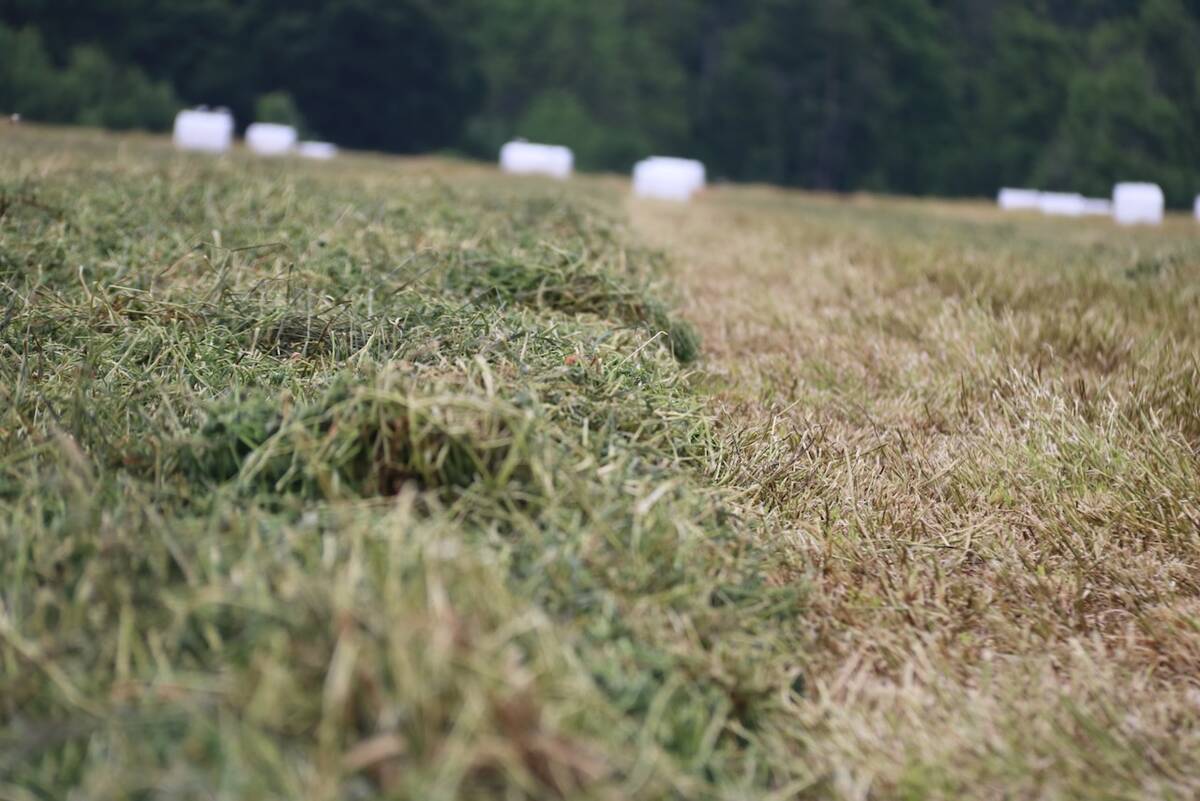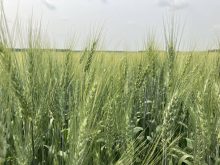The Canadian canola industry has a new tool for growers who wish to assess the risk of pod shatter in their canola cultivars.
Intended to help producers make better harvest timing decisions and analyze crop loss, this system rates pod shatter resistance in canola cultivars on a scale of one to nine. It was designed in part to help canola producers know their options if they decide to delay harvest — a choice several growers considered as last year’s hot, dry growing season extended into harvest time in many parts of the Prairies.
Read Also

New high-performance forage training program to launch in 2026
A new Canadian Forage and Grasslands Asssociation high-performance forage program will be a resource for farmers, agronomists and others in the forage sector.
Basically, a cultivar with intermediate or high pod shatter resistance (the five to nine range) reduces the risk of delaying harvest and is considered appropriate for straight cutting. Meanwhile, swathing is recommended for varieties rated one to four due to a higher risk of shattering if left standing too long.
It’s also a tool for assessing harvest loss, says Nicolea Dow, a farmer and director for Manitoba Canola Growers who spoke at Canola Week 2021. Although there are many factors that contribute to harvest loss, pod shatter is something observable and quantifiable that can be tackled with resistant cultivars.
“We determined the (factor) we could isolate and put a rating to, which would have some meaning, is shatter,” says Dow, who chaired the committee that developed the system.
The system represents a chance for the industry to have a “common nomenclature” when it comes to pod shatter in canola, she adds.
“This is something that will provide farmers with a clear way to assess a cultivar for shattering. It will be very helpful both at the beginning of the season when we are selecting which cultivars we are going to order seed from and through the season, when determining how we are going to manage those fields.”
Or, as Taryn Dickson, a resource manager with the Canola Council of Canada puts it, “Canola cultivar ‘A’ may not be equal to canola cultivar ‘B’ when it comes to shattering and, therefore, should not be treated equally either.”
The ratings do not account for a specific percentage of pod shatter, says Dickson. Rather, it rates cultivars relative to two designated checks, 45H33 and L255PC, which anchor the numerical/descriptive claim based on seed provider data.
Dickson has some disclaimers for producers using the system. First and foremost, they should not consider the ratings the final word on the cultivars they choose to invest in.
“The ratings are not a promise or a performance guarantee. It’s still suggested growers consult their retailers for recommendations.”
Growers should always be cautious about how long they leave a crop unharvested, says Dickson. Any crop, regardless of cultivar, left in the field for too long past the recommended harvest timing will likely face challenges.
“Also, remember genetic resistance to pod shatter will not prevent pod drop. There are no claims by seed companies about pod drop.”
In fact, pod shatter is frequently confused with pod drop. However, there are important differences, says Dickson. Pod shatter occurs when the seed pod splits open and the seeds drop, while pod drop is the result of the entire seed pod dropping to the ground.
From a management perspective, however, the biggest difference is that pod shatter is highly related to genetic background while pod drop is generally driven by environmental conditions beyond producers’ control, she says.
Diverse group informed ratings system
A primary driver of the ratings system was harvest losses from the hot, dry growing season in much of Manitoba in 2020. These conditions were further complicated by extreme winds, says Dow.
“In hindsight, there were a lot of things that happened that growing season. Much like this year, it was extremely hot and it was very dry. Snowflake (a community in Manitoba located near the Canada-U.S. border) had 137 days with over 50-kilometre-per-hour winds. Particularly in the fall season as the canola was maturing, we had some really high winds and we lost in canola swath. Standing canola was really prevalent.”
This highlighted the need for better risk assessment tools at harvest time, she says. Following the 2020 harvest, Manitoba Canola Growers decided to bring a motion to the Western Canada Canola/Rapeseed Recommending Committee (WCC/RRC), which is the industry body that recommends canola cultivars for CFIA registration, for the development of a pod shatter rating.
“Ratings like these are not a direct purview of the WCC/RRC but it was a place with all of the right people, so we thought it was a good avenue and a good place for us to bring something like this forward and get all of the right people on board,” says Dow.
With the WCC/RRC’s go-ahead, an existing canola shatter ratings subcommittee representing producers from all three Prairie provinces was revitalized with Dow as chair.
“It was a diverse group,” she says.
“There were farmers represented from Manitoba, Saskatchewan and Alberta. We had really broad representation from the seed and grain industry. I think every major private breeder was represented in this group and we also had a lot of support from groups like the Canola Council of Canada and Agriculture and Agri-Food Canada as well.”
The subcommittee decided any ratings system should provide farmers with a clear way to assess a cultivar for shattering, ensure the ratings are understood so farmers have full knowledge in planning for harvest and be a valuable tool for managing risk in canola crops at harvest time.
“We also talked about what the seed companies needed. A rating like this is voluntary — it’s not something that’s mandated. In order for it to be successful, we needed it to be something that would work for everyone,” says Dow, adding the process was “a true success.”
“As a farmer, it’s something I’m really proud of. I think it shows the success of the canola industry working together.”
Participating seed companies have just started to use these ratings in their product material, so there’s no central place to find them — at least not yet. Stay tuned to the Canola Council of Canada website at canolacouncil.org for further updates on when there will be a home for these ratings.
















